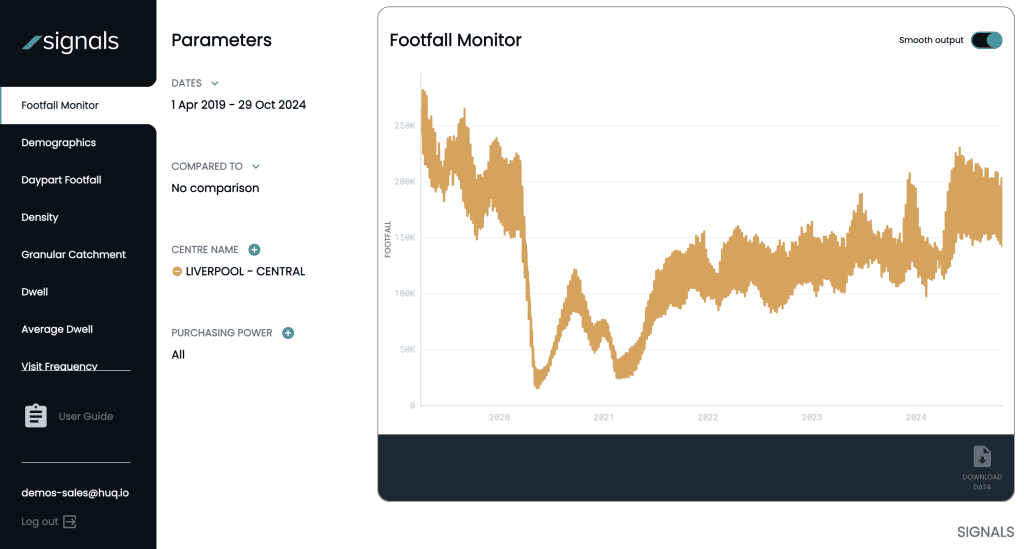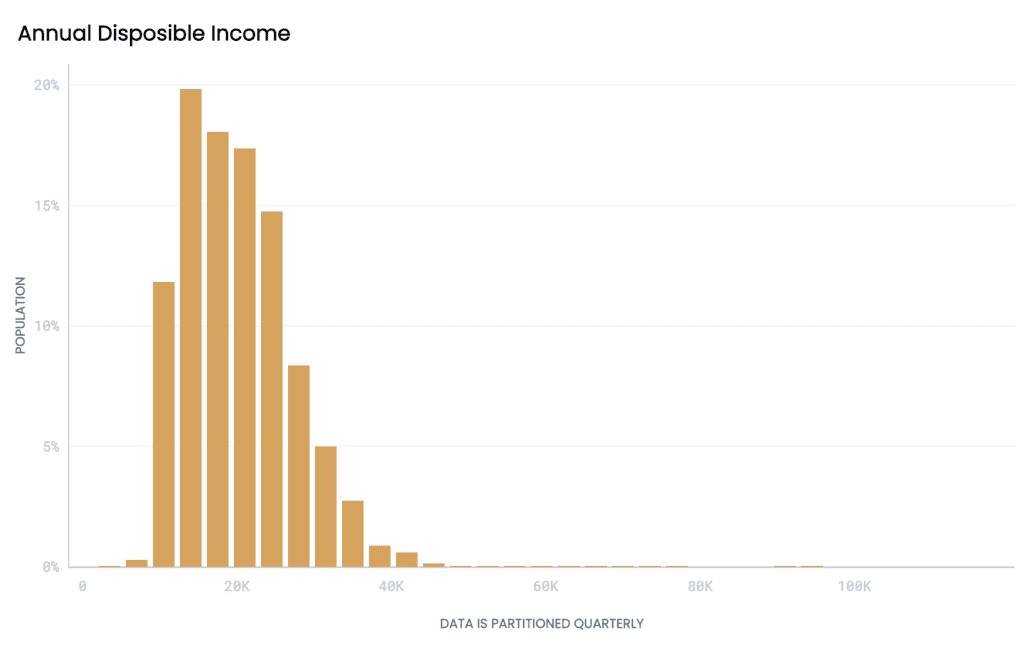The Role of Footfall Data in Economic Development and Urban Regeneration
Footfall data has become an essential tool for local authorities working to support economic growth and revitalise towns and cities across the UK. In this post, we’ll explore how footfall monitoring can be leveraged to shape vibrant, thriving centres, measure the effectiveness of interventions, and guide future urban planning initiatives.
Community-Level Analysis
Gain a clearer understanding of how residents and visitors interact with local centres.
Allocating Investment
Guide public investment decisions by identifying areas that would benefit most.
Benchmarking
Combine footfall data with local business and service usage metrics to understand the impact of local initiatives.
Urban Planning
Footfall data provides an evidence-based foundation for long-term planning.
Why Track Footfall?
Footfall data enables local authorities to monitor the flow of visitors in specific areas, providing critical insights into community engagement. By tracking footfall over time, councils can establish a baseline for the “usual” activity in a location, which is valuable when assessing the impact of any new public project or policy. This data is particularly relevant for projects aimed at improving public spaces, as it helps demonstrate whether these efforts are increasing engagement and enhancing the area’s vitality.
Insights into Visitor Trends and Patterns
A valuable aspect of footfall data is its ability to capture long-term trends and seasonal fluctuations. Monitoring data over several months or years provides a clearer picture of how people interact with local spaces, highlighting patterns that may not be immediately visible. This historical context is especially useful when local authorities look to compare current levels of activity with pre-pandemic trends, allowing them to assess the area’s recovery and identify lingering impacts.
Huq’s platform, for instance, offers a “smoothened output” feature, which averages weekly data for a more readable trend line. This makes it easier to observe and analyse broad patterns over time, removing some of the noise from short-term spikes or dips that may be tied to one-off events.

Measuring the Impact of Regeneration Projects
For councils engaged in regeneration and pedestrianisation projects, footfall data offers an objective means to evaluate progress. By comparing visitor numbers before and after a project, local authorities can measure changes in engagement, providing a data-driven understanding of whether a project’s goals have been met. This data can help validate further investment in similar initiatives and provide evidence to stakeholders that interventions are yielding results.
For example, pedestrianisation or public realm improvements often aim to increase foot traffic and create a welcoming environment. With footfall data, councils can monitor whether these projects are meeting their goals, thereby justifying public spending and optimising future plans.
Analysing Footfall by Demographic and Economic Segments
Beyond overall footfall trends, understanding the makeup of visitors is crucial for making tailored urban planning decisions. Some platforms offer segmentation tools that allow local authorities to filter data by factors such as purchasing power, enabling them to see which groups are most represented in specific areas. Analysing this information can help councils design spaces that meet the needs of their communities, from high street enhancements that cater to everyday shoppers to areas that attract higher-value visitors.
This demographic insight is particularly beneficial when planning commercial zones or deciding where to allocate resources to drive local economic growth. By understanding who is engaging with an area and in what ways, councils can make more nuanced decisions that better reflect the community’s demographic profile.

Why Footfall Data Matters for Community Wellbeing and Growth
Footfall data is more than just a tool for understanding numbers; it’s a vital asset for creating liveable, sustainable, and thriving urban spaces. By providing insights into the ebb and flow of activity, footfall monitoring helps councils design interventions that align with residents’ needs and ambitions. It also offers a transparent means to evaluate the impact of public spending, ensuring that urban planning remains responsive and accountable.
In summary, footfall data equips local authorities with a clearer picture of how people interact with local spaces, helping them create environments that are vibrant, resilient, and community-focused. Whether you’re assessing past projects or shaping future initiatives, footfall insights are a key ingredient for building places that foster wellbeing and prosperity for all.
Footfall
Provides a baseline ahead of interventions to then monitor impact, as well as understand the health and vitality of a retail centre.
Secure Funding
Then prove the quality of your work with the changes in data to secure funding for future development.
Is your team facing similar challenges?
Our experienced team can demonstrate how to use location intelligence and analytics to augment a wide range of use cases, including:
- Identifying areas for community-focused investments
- Optimising the use of public spaces and facilities
- Informing local economic development strategies
- Enhancing the effectiveness of community engagement initiatives
- Benchmarking performance across districts and town centres
- Understanding the local business landscape and visitor demographics
- Optimising event timing and public service hours

